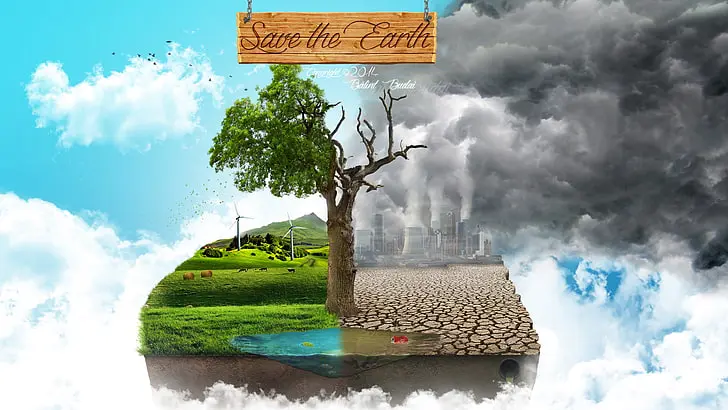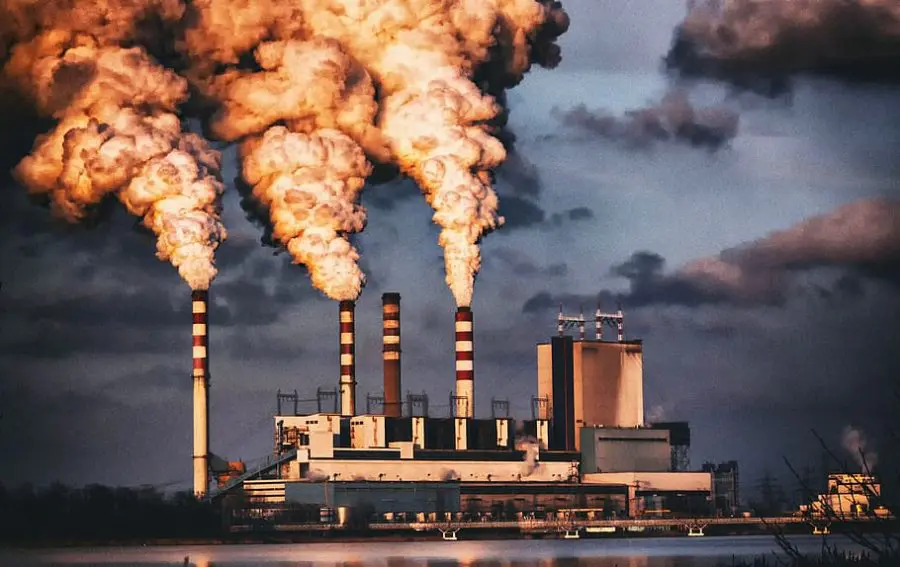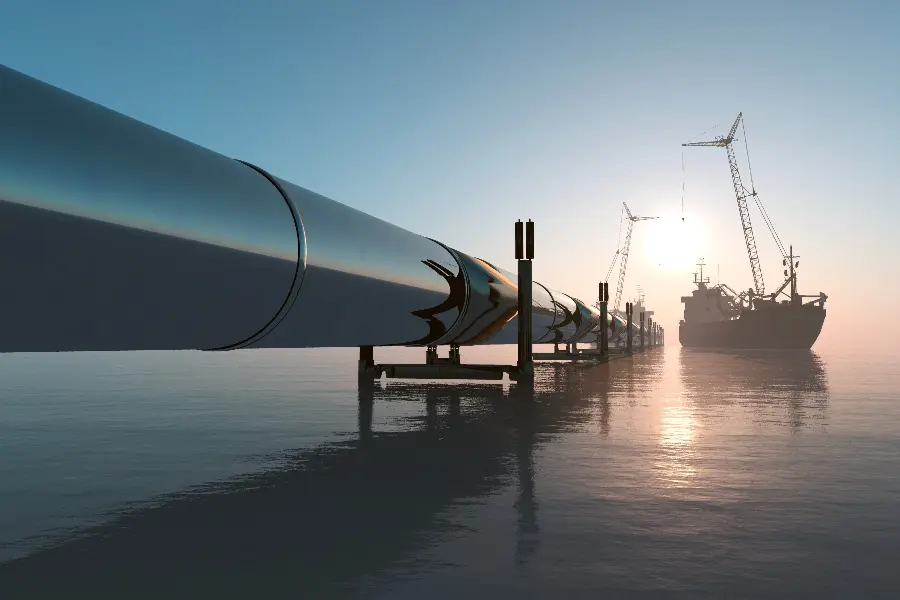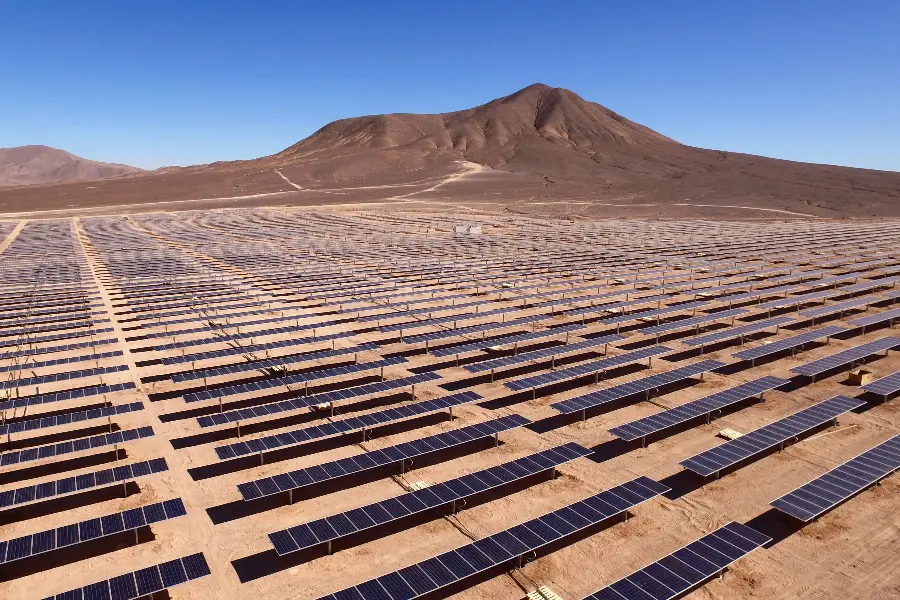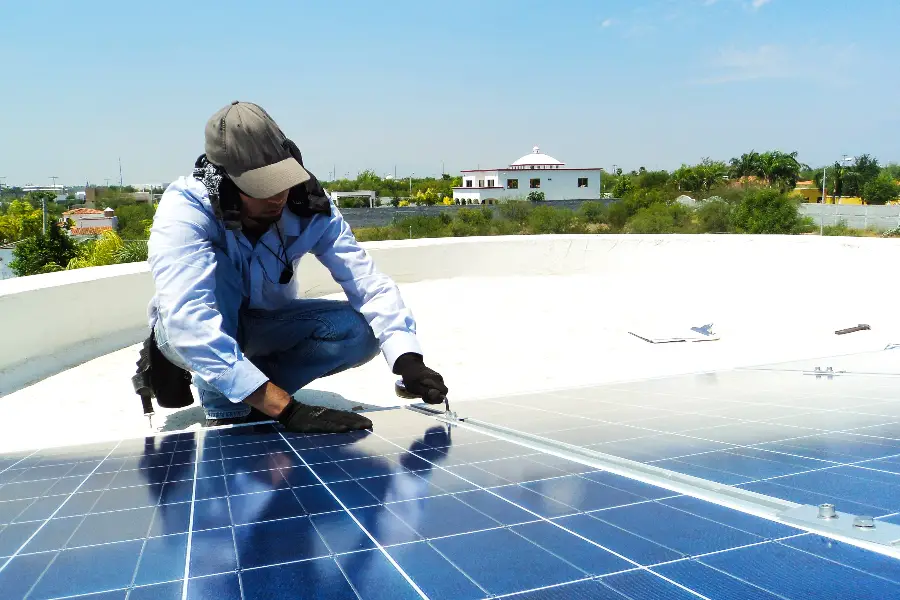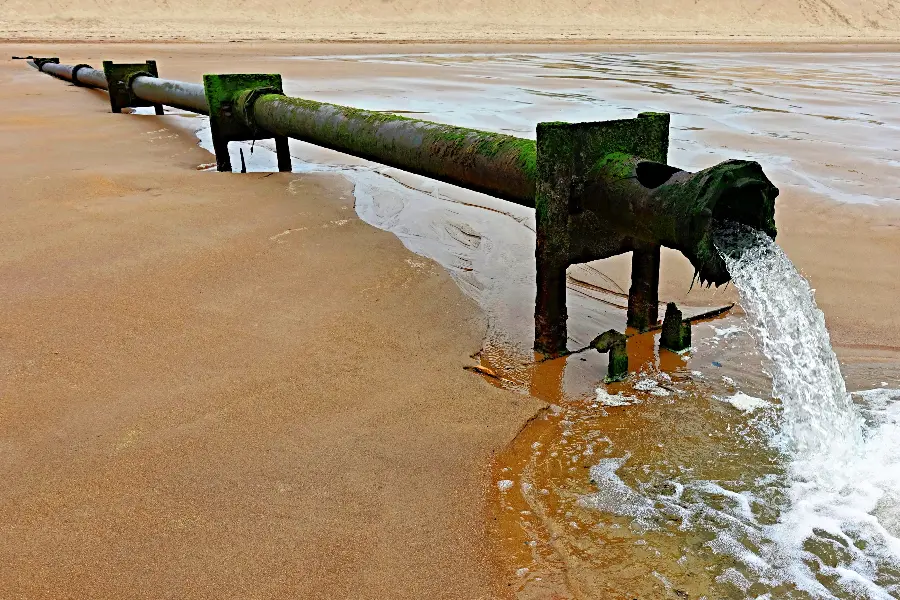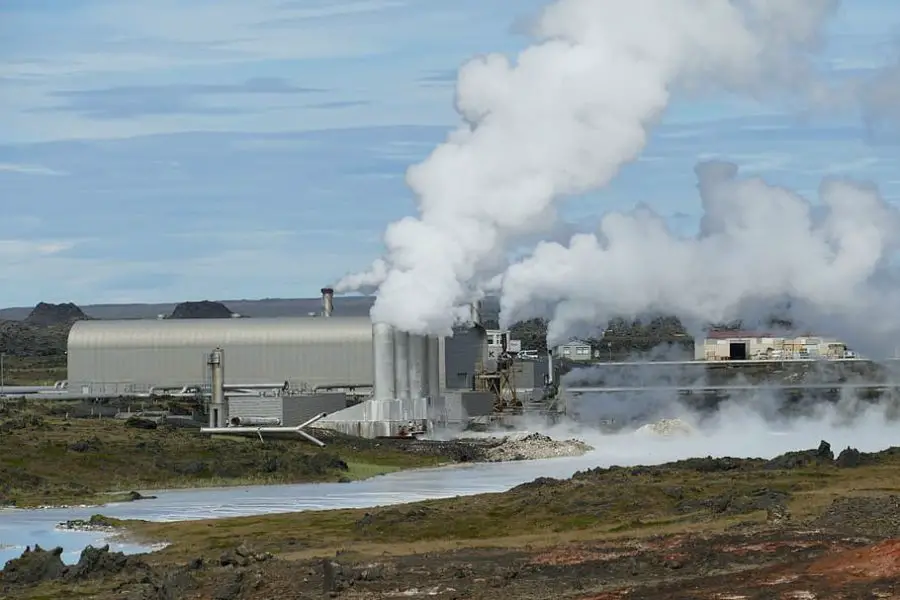
Does Geothermal Energy Cause Pollution? Explore the truth in our latest blog post. Dive into the world of renewable energy and its environmental impact.
Have you ever found yourself wondering, ‘Does Geothermal Energy Cause Pollution?’
It’s a question that’s been on the minds of many as we navigate our way toward a more sustainable future.
In this blog post, we’re going to delve into the world of geothermal energy, a fascinating form of renewable energy that comes straight from the heart of our planet.
We’ll explore how it’s harnessed, and its benefits, and yes, we’ll tackle the big question regarding its potential for pollution. So, let’s embark on this journey of discovery together!
Does Geothermal Energy Cause Pollution?
Does Geothermal Energy Cause Pollution? It’s a question that might have crossed your mind as we all strive to understand the environmental impacts of our energy choices.
In this blog post, we’re going to shed light on this very topic. We’ll start by introducing you to the intriguing world of geothermal energy and how it’s harnessed.
Then, we’ll walk you through the process of geothermal energy production, its benefits, and the potential pollution it may cause.
We’ll also discuss the measures taken to mitigate these environmental impacts and share some real-world case studies.
And, of course, we’ll answer some frequently asked questions. So, buckle up for an enlightening exploration of geothermal energy and its environmental footprint!
Definition of Geothermal Energy
Let’s start with the basics. What exactly is geothermal energy?
Well, the term ‘geothermal’ comes from the Greek words ‘geo,’ meaning earth, and ‘therme,’ meaning heat.
So, geothermal energy is essentially the heat that comes from the earth. It’s a form of renewable energy that we get from the earth’s core.
Deep down beneath us, the decay of radioactive particles from rocks and the extreme heat from the earth’s core generate this energy.
This heat is continuously produced, making it a reliable and sustainable source of energy.
Brief Overview of How Geothermal Energy is Harnessed
Now that we know what geothermal energy is, let’s talk about how we harness it.
The process is quite fascinating! Geothermal power plants are built on geothermal reservoirs, which are areas with high heat flow.
These reservoirs can be found where the earth’s tectonic plates meet, allowing heat to escape more easily.
There are three main types of geothermal power plants: dry steam, flash steam, and binary cycle.
Dry steam power plants take the steam out of fractures in the ground and use it to directly drive a turbine that spins a generator.
Flash plants take hot water, usually at temperatures over 360°F, out of the ground, and allow it to boil as it rises to the surface then separates the steam phase in steam/water separators and then run the steam through a turbine.
In binary plants, the hot water flows through heat exchangers, boiling an organic fluid that spins the turbine.
The condensed steam and remaining geothermal fluid from all three types of plants are injected back into the hot rock to pick up more heat.
The energy harnessed is then used for various applications, such as heating buildings, generating electricity, and more. It’s a remarkable process that taps into the natural heat beneath our feet!
The Process of Geothermal Energy Production
Now that we’ve covered what geothermal energy is, let’s dive a little deeper and explore how this incredible source of power is produced.
It’s a process that involves tapping into the earth’s natural heat, converting it into electricity, and then delivering it to our homes and businesses.
It’s like having a little piece of the earth’s core powering our daily lives!
So, get ready as we journey beneath the earth’s surface and unravel the fascinating process of geothermal energy production.
Now that we’ve covered what geothermal energy is, let’s dive a little deeper and explore how this incredible source of power is produced.
It’s a process that involves tapping into the earth’s natural heat, converting it into electricity, and then delivering it to our homes and businesses.
It’s like having a little piece of the earth’s core powering our daily lives!
So, get ready as we journey beneath the earth’s surface and unravel the fascinating process of geothermal energy production.
Description of the Geothermal Energy Production Process
Let’s start our journey into the geothermal energy production process.
It all begins deep beneath the earth’s surface, where intense heat from the earth’s core warms the rock and water trapped in the earth’s crust.
This heat from the earth’s interior warms the underground water to produce steam and hot water.
Geothermal power plants are built on these ‘hot spots’ to tap into this underground heat.
They drill wells, sometimes up to two miles deep, and pump the hot underground water or steam to the surface. This steam and hot water are then used to run electric generators.
The steam cools down after it has done its job and is condensed back into water.
This water is then returned to the ground where it can be heated up and used again, making the process sustainable and efficient.
Types of Geothermal Energy Systems: Dry Steam, Flash Steam, Binary Cycle
There are three main types of geothermal power plants that use different methods to harness geothermal energy: Dry Steam, Flash Steam, and Binary Cycle.
Dry Steam Power Plants: These are the oldest type of geothermal power plant.
They directly use the steam from the earth to turn generator turbines. The steam then condenses into water and is returned to the ground.
Flash Steam Power Plants: These are the most common type of geothermal power plant.
They use water at temperatures greater than 360°F. When this high-pressure hot water is released to the surface, it ‘flashes’ or quickly converts to steam, which then drives the generator turbines.
Binary Cycle Power Plants: These are the most recent development in geothermal technology.
They use water at lower temperatures of about 225°F to 360°F. The hot water is passed through a heat exchanger, which transfers the heat to a secondary fluid (like butane or pentane) that boils at a lower temperature than water. This secondary fluid vaporizes and turns the turbines.
Each of these systems has its own unique features and advantages, but they all serve the same purpose: to harness the earth’s natural heat and convert it into usable energy.
It’s a testament to human ingenuity and our ability to work with nature to power our lives!
Benefits of Geothermal Energy
As we delve deeper into the world of geothermal energy, it’s time to highlight the numerous benefits this form of energy brings to the table.
Geothermal energy is not just about harnessing the earth’s heat; it’s about transforming it into a powerhouse of benefits that can positively impact our lives and the environment.
From its renewable nature to its low emissions, cost-effectiveness, and more, geothermal energy has a lot to offer.
So, let’s dive in and uncover the many advantages of this incredible energy source!
Renewable and Sustainable Nature of Geothermal Energy
One of the most significant benefits of geothermal energy is its renewable and sustainable nature.
Unlike fossil fuels, which are finite and will eventually run out, geothermal energy is virtually limitless.
The heat from the earth’s core is continuously produced, and as long as the earth exists, we’ll have access to this source of energy.
Plus, the water used in the geothermal energy process is replenished by rainfall, and the heat used is almost immediately replaced.
This makes geothermal energy a sustainable option that we can rely on for generations to come.
Low Emissions and Environmental Impact
Geothermal energy is also known for its low emissions and minimal environmental impact.
Unlike fossil fuel power plants, geothermal power plants do not burn fuel to generate electricity, which means they emit significantly fewer greenhouse gases.
While some emissions are released during the drilling process, the overall emission levels are much lower compared to those of fossil fuel power plants.
This makes geothermal energy a cleaner and more environmentally friendly option.
Cost-Effectiveness and Reliability
When it comes to cost-effectiveness and reliability, geothermal energy shines.
The costs of setting up a geothermal power plant can be high, but once it’s up and running, the operational costs are relatively low.
This is because the energy source, heat from the earth is free and consistently available, unlike wind or solar energy, which depend on weather conditions.
This constant availability makes geothermal energy one of the most reliable sources of power.
Abundance and Availability
Finally, the abundance and availability of geothermal energy make it a promising source of power.
Geothermal reservoirs are found all over the world, and with advancements in technology, we can tap into this energy even in areas where hot springs or geysers are not present.
This widespread availability means that many regions can harness and benefit from geothermal energy, making it a globally viable energy option.
Does Geothermal Energy Cause Pollution?
Now, let’s address the elephant in the room. Does Geothermal Energy Cause Pollution?
It’s a crucial question, especially as we strive to find energy solutions that not only meet our needs but also protect our planet.
In this section, we’re going to delve into the potential environmental impacts of geothermal energy.
We’ll explore how and why it could cause pollution, the types of pollution it might produce, and how it compares to other energy sources in terms of environmental impact.
It’s a complex issue, but we’re here to break it down for you. So, let’s get started!
Explanation of How Geothermal Energy Can Cause Pollution
While geothermal energy is a cleaner alternative to fossil fuels, it’s not without its environmental concerns.
One of the main ways geothermal energy can cause pollution is during the drilling process.
Drilling wells for geothermal plants can release greenhouse gases trapped deep within the earth, such as carbon dioxide and sulfur dioxide.
Although these emissions are lower compared to those from fossil fuel plants, they are still a source of pollution.
Additionally, the water that is brought up from geothermal reservoirs can contain a mixture of gases, some of which can be harmful if released into the atmosphere.
This water can also contain trace amounts of heavy metals, which can be harmful if not properly managed.
Types of Pollution Caused: Air Pollution, Water Pollution, Land Pollution
Air Pollution: As mentioned, the drilling process can release gases trapped beneath the earth’s surface, contributing to air pollution.
However, it’s important to note that these emissions are significantly lower than those from fossil fuel power plants.
Water Pollution: The water used in geothermal power plants can contain low levels of heavy metals and other contaminants.
If this water is not properly treated before being discharged, it could potentially pollute rivers and other bodies of water.
Land Pollution: Geothermal power plants, like any other industrial facility, require significant land use.
This can lead to habitat destruction and soil erosion. Moreover, the disposal of geothermal fluids and solid waste, if not managed properly, can lead to land pollution.
Comparison of Pollution Levels with Other Energy Sources
When compared to other energy sources, geothermal energy is a much cleaner option.
Fossil fuel power plants, for example, emit high levels of carbon dioxide, sulfur dioxide, and other harmful gases during combustion.
In contrast, the emissions from geothermal power plants are much lower.
However, it’s worth noting that other renewable energy sources like wind and solar have even lower environmental impacts.
They do not emit greenhouse gases during operation and require less water.
In conclusion, while geothermal energy does have some environmental impacts, they are significantly lower than those from fossil fuels.
With proper management and regulation, geothermal energy can be a sustainable and environmentally friendly energy source.
Mitigation Measures for Geothermal Energy Pollution
While we’ve established that geothermal energy can cause some pollution, it’s important to note that there are measures in place to mitigate these impacts.
In this section, we’re going to explore the various ways we can reduce the environmental footprint of geothermal energy.
From sustainable management of geothermal resources to technological advancements and regulatory policies, there’s a lot being done to make geothermal energy as clean and green as possible.
So, let’s dive in and discover how we’re making geothermal energy even better for our planet!
Sustainable Management of Geothermal Resources
Sustainable management of geothermal resources is key to minimizing the environmental impact of geothermal energy.
This involves careful planning and operation of geothermal power plants.
For instance, the water used in geothermal power plants can be reinjected into the ground, preventing the release of harmful gases into the atmosphere and reducing the risk of land subsidence.
This practice not only helps to mitigate environmental impacts but also ensures the sustainability of the geothermal resource for future use.
Technological Advancements to Reduce Pollution
Technology plays a significant role in reducing the pollution caused by geothermal energy.
For example, advanced drilling techniques can minimize the release of greenhouse gases during the drilling process.
Additionally, new technologies are being developed to capture and utilize the gases that are released, further reducing emissions.
On the water management front, treatment technologies can help to remove heavy metals and other contaminants from the water used in geothermal power plants, preventing water pollution.
Regulations and Policies for Pollution Control
Regulations and policies also play a crucial role in controlling the pollution caused by geothermal energy.
These can include emission standards for geothermal power plants, requirements for wastewater treatment, and guidelines for the safe disposal of solid waste.
By enforcing these regulations and policies, governments can ensure that geothermal energy is produced in a way that minimizes its environmental impact.
In conclusion, while geothermal energy does have some potential for pollution, there are many strategies in place to mitigate these impacts.
Through sustainable management practices, technological advancements, and regulatory measures, we can harness the power of the earth’s heat in a way that is not only effective but also environmentally friendly.
Case Studies
Now that we’ve explored the ins and outs of geothermal energy, it’s time to bring all this information to life with some real-world examples.
In this section, we’re going to look at a few case studies that highlight the production of geothermal energy and its environmental impact.
We’ll also share some success stories of how pollution control measures have been effectively implemented in geothermal energy production.
These case studies will give us a more concrete understanding of how geothermal energy works in practice and the steps we can take to make it even more sustainable.
So, let’s dive in and see geothermal energy in action!
Examples of Geothermal Energy Production and Its Environmental Impact
Let’s take a look at some examples of geothermal energy production around the world and their environmental impacts.
The Geysers in California:
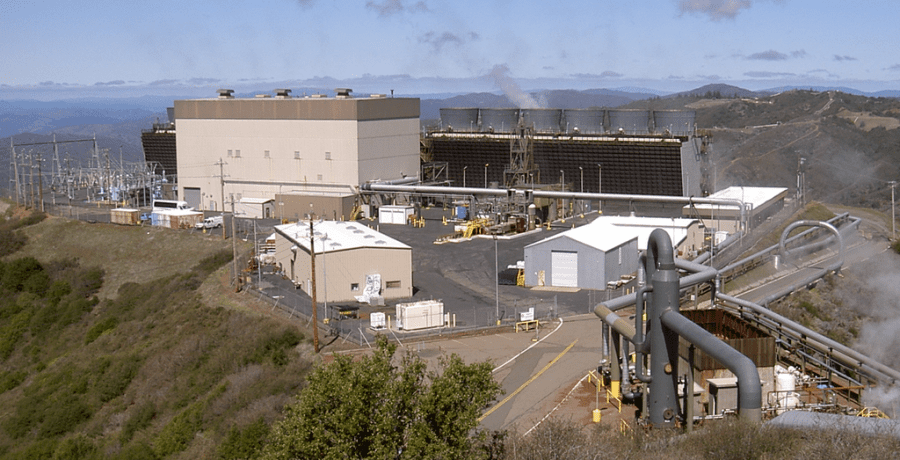
The Geysers is the largest geothermal field in the world, with 22 geothermal power plants that collectively generate more than 800 megawatts of electricity.
However, the extraction of geothermal fluids has led to land subsidence in the area.
To mitigate this, the plants now reinject water back into the ground, helping to replenish the geothermal reservoir and reduce land subsidence.
Hellisheidi Power Station in Iceland:

Iceland is one of the world leaders in geothermal energy production, and the Hellisheidi Power Station is one of the largest geothermal power plants in the world.
While the plant has significantly reduced Iceland’s reliance on fossil fuels, it has also faced challenges with the release of hydrogen sulfide, a harmful gas.
The plant is now working on a solution to capture and convert this gas into harmless compounds.
Success Stories of Pollution Control in Geothermal Energy Production
Now, let’s look at some success stories where pollution control measures have been effectively implemented in geothermal energy production.
Cerro Pabellon in Chile: Cerro Pabellon is the first geothermal power plant in South America. The plant has implemented strict environmental standards to protect the surrounding fragile ecosystem.
This includes careful management of geothermal fluids to prevent water pollution and the use of advanced technologies to reduce emissions.
Olkaria Geothermal Plant in Kenya:

The Olkaria Plant is one of the largest geothermal power plants in Africa.
The plant has made significant efforts to reduce its environmental impact, including the reinjection of geothermal fluids back into the ground and the implementation of strict emission standards.
These case studies show that while geothermal energy production can have environmental impacts, with careful management and the right technologies, these impacts can be significantly reduced.
They serve as a testament to the potential of geothermal energy as a sustainable and environmentally friendly energy source.
FAQs-Does Geothermal Energy Cause Pollution?
As we journey through the world of geothermal energy, you might have a few questions popping up in your mind. And you’re not alone!
Many people have queries about this fascinating form of energy. In this section, we’re going to address some of the most frequently asked questions about geothermal energy and its impact on the environment.
From why it causes pollution to its advantages and disadvantages, we’ve got you covered. So, let’s dive into these FAQs and quench our thirst for knowledge!
Q: Why does geothermal energy cause pollution?
A: While geothermal energy is a cleaner alternative to fossil fuels, it can cause some pollution.
This primarily occurs during the drilling process, where gases trapped deep within the earth, such as carbon dioxide and sulfur dioxide, can be released.
Additionally, the water brought up from geothermal reservoirs can contain a mixture of gases and trace amounts of heavy metals, which can be harmful if not properly managed.
Q: What are 3 disadvantages of geothermal energy?
A: Limited Availability: Geothermal energy can only be harnessed in regions with geothermal activity, such as hot springs or tectonic plate boundaries.
High Initial Costs: The upfront costs of building a geothermal power plant can be high, including the costs of site exploration and drilling wells.
Environmental Impact: While significantly less than fossil fuels, geothermal energy does have some environmental impact, including the potential release of harmful gases and the disruption of natural habitats during the construction of power plants.
Q: Is geothermal energy environmentally friendly?
A: Yes, geothermal energy is generally considered environmentally friendly, especially when compared to fossil fuels.
It produces significantly fewer greenhouse gas emissions and the water used in the process can be reinjected back into the ground, reducing water usage.
However, like any energy source, it does have some environmental impact, which can be managed with proper practices and technologies.
Q: Why is geothermal not used more?
A: The use of geothermal energy is limited by several factors.
Firstly, it’s location-specific and can only be harnessed in areas with geothermal activity.
Secondly, the initial costs of setting up a geothermal power plant can be high.
Lastly, there are also technical challenges, such as the need for advanced drilling techniques and the management of geothermal fluids and gases.
Q: Does geothermal affect the climate?
A: Geothermal energy is a low-carbon energy source, so it contributes much less to climate change compared to fossil fuels.
However, the drilling process can release some greenhouse gases, which do contribute to climate change.
But with proper management and technology, these emissions can be significantly reduced.
Therefore, increasing the use of geothermal energy can be part of the solution to mitigate climate change.
Does Geothermal Energy Cause Pollution? Final Thoughts
As we reach the end of our deep dive into geothermal energy, it’s time to wrap up what we’ve learned.
We’ve journeyed from the heart of the earth to the inner workings of geothermal power plants, explored the benefits and potential environmental impacts, and even looked at real-world examples.
In this conclusion, we’ll recap the key points and look toward the future of geothermal energy.
It’s been quite a journey, and we’re excited to share these final thoughts with you. So, let’s bring it all together!
Recap of Key Points
We started our journey by understanding what geothermal energy is – a form of renewable energy harnessed from the heat within the earth.
We learned about the process of geothermal energy production and the different types of geothermal energy systems: Dry steam, Flash steam, and Binary cycle.
We then explored the numerous benefits of geothermal energy, including its renewable and sustainable nature, low emissions, cost-effectiveness, and wide availability.
However, we also acknowledged that geothermal energy can cause pollution, primarily during the drilling process and through the release of gases and heavy metals from the geothermal fluids.
We discussed the various mitigation measures in place to reduce these impacts, such as sustainable management of geothermal resources, technological advancements, and regulatory policies.
We also looked at real-world examples and success stories of geothermal energy production and pollution control.
Future Prospects of Geothermal Energy
Looking ahead, the future of geothermal energy appears promising.
As we continue to seek cleaner and more sustainable energy sources, geothermal energy is likely to play an increasingly important role.
Technological advancements will continue to improve the efficiency of geothermal power plants and reduce their environmental impact.
Moreover, as awareness of the environmental impacts of fossil fuels grows, more and more countries are likely to invest in geothermal energy.
With its numerous benefits and potential for sustainable and continuous power, geothermal energy holds great promise for our energy future.
In conclusion, while geothermal energy does come with some environmental considerations, with the right management and technology, it can be a significant part of our move towards a more sustainable and cleaner energy future.

